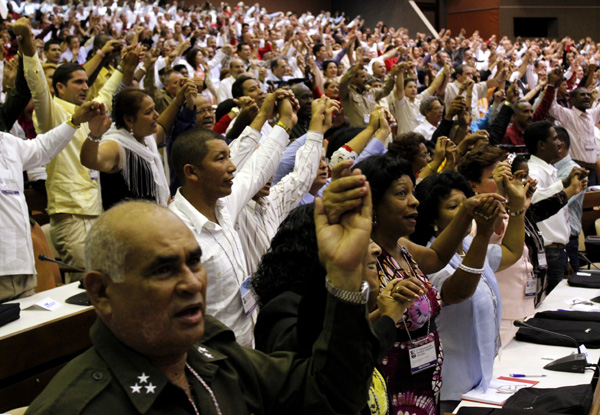Cuba’s Reforms and Worker Participation
Haroldo Dilla Alfonso

HAVANA TIMES, May 20 — They have finally issued the “Guidelines” document approved by the Sixth Congress of the Communist Party of Cuba (PCC), which will supposedly guide what can be done (meaning it will set limits and establish reach) within the framework of what Cuban leaders call the “updating” of the economic and social model.
When reading the published documents, I had to acknowledge that on this occasion considerable effort had been made for the nomenclature to be transparent – or at least look that way.
The challenge lies in the difficulty of having a single party, a single type of press and a single possible path (what the guys at the PCC are determined to call “socialism,” though what they have seems much more like what Marx called the “Asiatic mode of production,” as much for where it comes from as where it’s going).
However the aim is visible if we look at how the gathering was managed in comparison to the previous congresses, and that’s a good sign (I believe the idea that governments should encourage debate about what they want to do is always promising).
The problem is that given the nature of the Cuban political system, we’ll never know exactly what was discussed or what was intended. Although I’m told that in many sessions people talked very freely about the permitted issue (the economy), any one of those sessions only made sense when it was subjected to the “vertical” processing mechanism that culminates at the top, and at whose highest level sits the general/president.
This is because each discussion session was a component that was isolated from the others; connected only at the “upper level,” none was ever in touch with the session to its side. This exemplifies the resource fragmentation that has been the key to the political domination of this insular society.
For that reason, when one says that there were more than three million suggestions, which were reduced to less than 800,000 “opinions,” and that they finally accepted only something like 13 percent of the positions, this left me wondering whether they meant the remaining 87 percent of the opinions were rejected. That would also mean that their supporters of course never had the opportunity to discuss their ideas and proposals openly, regardless of how preposterous or apropos they might have been.

It is a right of the population to exert their ideas and sway public opinion and not merely for these to be weighed as to their acceptability by the political class. This is an unavoidable condition for democratic participation, which doesn’t exist within the participative framework on the island.
Following the thread of participation, it’s interesting to observe what has happened in these “Guidelines” regarding on-going participation. Even when the final document proposes a generalized scheme for managerial decentralization, where one can observe the transfer of significant shares of power and for government enterprises with fixed budgets, very little is mentioned about the participation of workers in management.
I’d say virtually nothing. The unions are never discussed and I believe that somewhere they only piously mention the involvement of employees in technological innovation.
And then there’s the arrogant Article 4. This is the sole place where they speak of workers’ participation in general terms. This article refers to the realization — “with order and discipline” — of “structural, functional, organizational and economic changes to the managerial system, along with those made to budgeted units and government administration in general.”
That’s to say changes in almost everything that is important.
In the original version that was issued for national discussion, any reference to workers’ participation was omitted, which raised reasonable doubts among people, who produced 790 positions demanding the inclusion of participation as a condition for the changes.

The editors did in fact make inclusions, but they specified that this participation would consist of “informing the workers and listening to their opinions.” And this was “without a guarantee,” as the vendors of cheap street goods would say.
The situation is one in which the Cuban military and the technocrats don’t want a transition with bothersome noises. They want to move from the pre-capitalist Asiatic mode to another one that is eminently capitalist – the one in which they themselves will experience a sweet bourgeois metamorphosis.
As members of the Third World proto-bourgeoisie, they are obliged to slap down all those in the country who recognize participation as offering the possibility for workers to impose their own conditions in a painful adjustment process.
What this means is that the norms of developed capitalism itself have assumed forms of participation that are more advanced than the practices of unilateral consultation suggested in Article 4.
In summary, the strategists for capitalist restoration in Cuba still haven’t reached the managerial level of a McDonald’s.






“This is because each discussion session was a component that was isolated from the others; connected only at the “upper level,” none was ever in touch with the session to its side.” OK then, here’s a question for the perpetual cynic Mr Dilla: show me a stadium in Cuba, or anywhere else in the world, where several million participants can simultaneously participate in a public discussion?